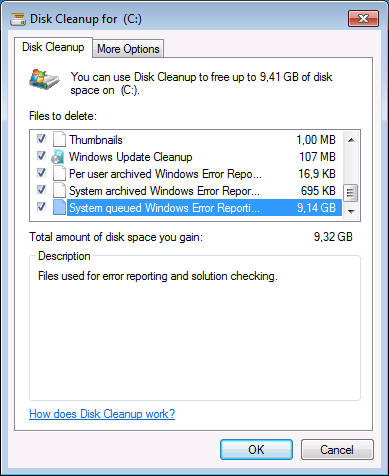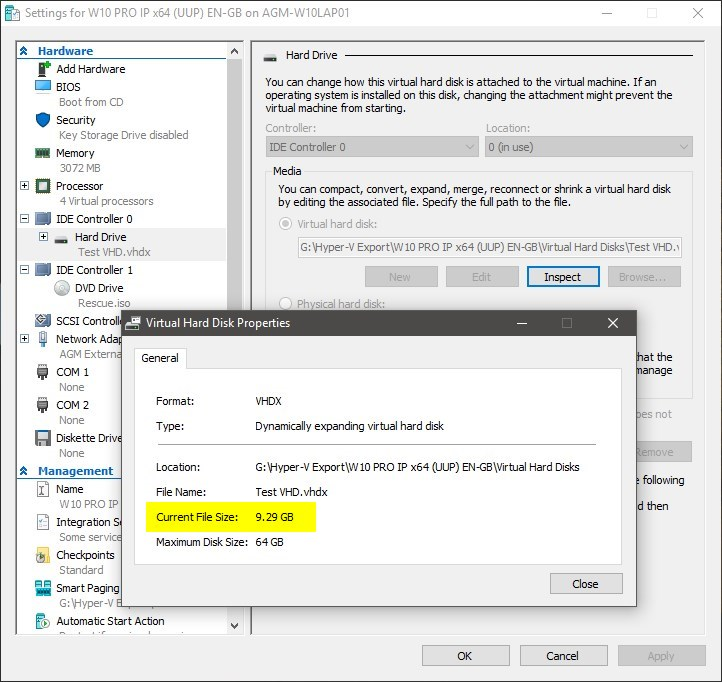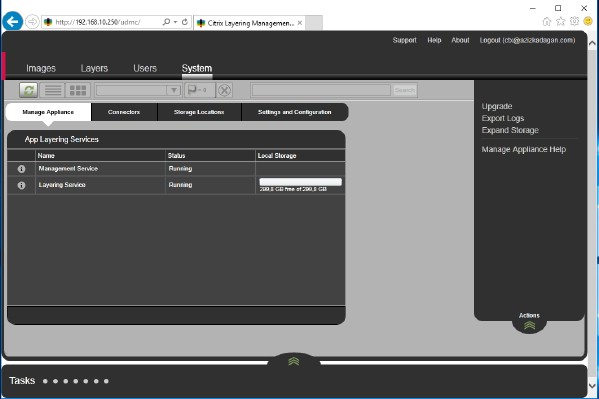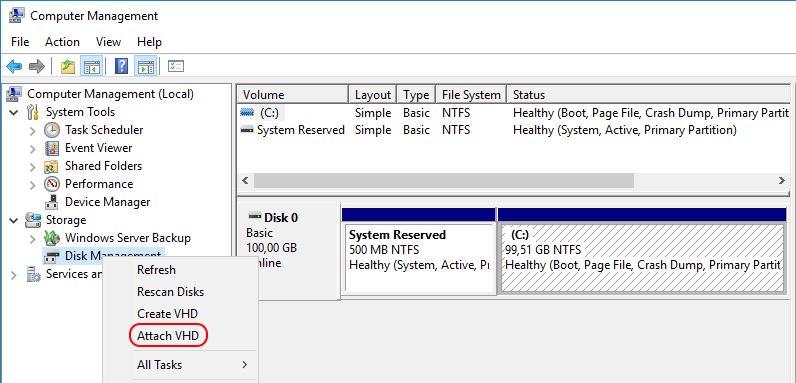- Compacting Vhd Files All About Citrix Access
- Compacting Vhd Files All About Citrix Login
- Compacting Vhd Files All About Citrix Software
- Compacting Vhd Files All About Citrix Workspace
- Compacting Vhd Files All About Citrix Workspace
- Compacting Vhd Files All About Citrix Software
- Open Vhd Files
The toolkit requires extra time because it does a block-level copy of the existing virtual hard drive to a new VHD file. You could use the PowerShell commands above to shrink the partition within the VHD before utilizing the VHDResizer. First, shut down the VM. Then mount the VHD, substituting the path below for the location of your VHD. Aug 26, 2012 Select Attach VHD.Select the required VHD File (The VHD appears as a volume on the server.)Defragment the drive for performance and storage optimization. (After defragmentation and optimization, the data on the VHD is now all at the beginning of the disk and defragmented.)Detach the VHD from within Disk Management. Once done, make a click on the Virtual Disk Wizard and select a Compact. Check the box next to Convert it to a fixed size virtual hard disk. Once you have performed all the above steps successfully, save the VHD file at the desired location on your system. So, this is how you can fix a damaged VHD file with two different methods.
- 0: Profile is not directed to the PvD
- 1: Profile is redirected to the PvD
Caution! Refer to the Disclaimer at the end of this article before using Registry Editor.
Q: Has Citrix’s Profile Management integration with PvD been tested?
A: Yes. There is a registry setting that also tells PvD to not cache the profile (and thereby save PvD disk space).
Q: What is the minimum size for the Personal vDisk?
A: 3GB is the minimum size and will be split per the administrator-defined configuration for two areas:
Applications and machine settings
Profile data (c:users)
By default, this is 50/50 split. If less than 4 GB size is defined, an allocation of 2GB for applications and machine settings and 1GB for profile data is used.
Selection larger than 4 GB respects the 50/50 allocation split.
If the PvD is set to less than 3 GB (if it even is able to attach successfully), then when the user logs on to the pool environment for the first time, a warning message is displayed that PvD is not available.
Compacting Vhd Files All About Citrix Access
Q: Is there a max size limitation for the Personal vDisk?
A: As large as your storage can handle.
Q: Does the user require administrator permissions in their PvD enabled Virtual Machine?
A: It is not required. This affects their ability to install application because PvD does not override any ACLs within the OS for the current user.
Q: What is the I/O impact of PvD desktops?
A: We have not published anything on this yet. While PvD has some additional IOPs, it is minimal. The impact of PvD desktops would be about the same as when using dedicated desktops.
Q: What are the guidelines handling IOPs across storage targets?
A: You might put the PvD on the same storage as base Virtual Machine or any other storage on that hypervisor. This would be general IOPS management or distribution and varies by the user.
Q: PvD must be on a file share or does it must to be connected to the storage on the host?
A: Only supported storage is through hypervisor storage targets.

Installation
Q: How do you configure Personal vDisk later if you choose not to enable it during the Virtual Desktop Agent (VDA) meta-installer?
A: Run the inventory updater in the base image through the start menu shortcut (or “Ctxpvd –s inventory”), which results in the service being started or inventory taken. At this point, the service is enabled and ready to run inventory and manage the PvDs.
Q: Does PvD install with the VDA or does it install in the controller too?
A: Only installs on the VDA or the Desktop. It installs both a windows service and kernel drivers.
Configuration
Q: Can I change the PvD allocation split from the default split of 50/50?
A: Yes. You can configure the percent to be allocated for applications and machines settings by setting the registry value in the base image:
- KEY: HKEY_LOCAL_MACHINESoftwareCitrixpersonal vDiskConfig
- VALUE: PercentOfPvDForApps
- By default, this value is set to 50
- Changing this to 80 will result in the App install allocated space being allocated 80% of the PvD disk
Q: Is the drive letter used by PvD able to be hidden?
A: Citrix personal vDisks have two parts which use different drive letters. The volume that stores user data (that is, C:users) and personal vDisk log files.The drive letter for this part defaults to “P:” and it is Not hidden.
The other part comprises a Virtual Hard Disk file (a .vhd file). This contains all other items, for example applications installed in C:Program Files. By default, this part is hidden from users; this drive is not displayed in Windows Explorer.
Q: Is the UserData.vhd file inside the P: drive mounted as v:?
A: The disk that is attached at the hypervisor (created by the MCS/PvS wizard) is mounted as P:. The P: drive is where the user profile is redirected and captured. Also located on that P: drive is a UserData.vhd that is mounted as v:. The V: drive is where all the non-profile data attempting to write to the base Virtual Machine is redirected and stored.
v: is visible from command prompt windows but not from Windows Explorer.
Q: What happens if either the v: or P: drive letter is in use?
A: Drive conflicts leads to failures. You must ensure the use of available drive letters.
Q: How do I change PvD to use different drive letters?
A: The P: drive might be changed in Desktop Studio when creating the catalog. This should only be changed before usage since changing afterwards might lead to various errors (same as changing the c: drive to another letter after installation).
Note: Drive conflicts leads to failures.
Q: What is captured on the v: drive and what is capture on the P: drive?
A: The P: drive is the vDisk that is attached to the hypervisor to the Virtual Machine. It contains the user’s profile is redirected (c:users … ). It also contains the UserData.vhd file that is in turn mounted as the v: drive.
The v: drive is where the applications and machines state is captured.
When resetting the PvD, you are resetting the v: drive (which is really restoring the UserData.vhd file on the P: drive to its original empty or template state.
Compacting Vhd Files All About Citrix Login
Q: Are you able to exclude changes made to certain folders?
A: PvD does not provide an option to do this natively, but this can be done through Active Directory Group Policy and use of locking down those folders using Windows ACLs.
Inventory or Catalog Creation
Compacting Vhd Files All About Citrix Software
Q: After the PvD drive containing the computed inventory is un- mounted, (automatically once the inventory updater is finished) where in the Virtual Machine is this template Virtual Hard Disk (VHD) stored?
A: The template vhd file is stored in the C:ProgramDataCitrixpersonal vDisk folder.
Q: What is the use of rules with PvD (defining what user and machine settings are actually managed and saved by the PvD)?


A: It is not recommend modifying those files. Rarely would these require modification except as directed for a support case being diagnosed. The rules files are there in plain text to allow visibility for supportability purposes. The rules mechanism is not meant as a general-use tool for administrators to modify. The rules govern population of the template VHD (which contains the inventory plus control hive) and how differences are calculated during image update.
Q: Are there guidelines on how administrators can customize rules files?
A: It is not recommend modifying those files. Rarely would these require modification except as directed for a support case being diagnosed.
Q: What is the inventory relationship between the copy in the PvD location and the one in the C:CitrixPvDSettingsInventory folder?

A: The contents of CitrixPvdSettingsInventory are coming from the base image, which are copied into the VHD when it is started for the first time.
Note: Remember to keep *both* inventories around since during image update, it is required to calculate the difference of what changed between base Virtual Machine version 1 to 2, then merge that into the user’s changes which is kept in the VHD.
Machine Creation Services and Provisioning Services Support
Q: Can I use the PvD with MCS and Provisioning Services?
A: Yes, the wizards added in XenDesktop 5.6 and Provisioning Services 6.1 support both MCS and Provisioning Services created PvD catalogs.
Q: Is it correct that the Differential, Identity, and PvD disks link to a Virtual Machine?
A: Correct. PvD is assigned or attached to a Virtual Machine and then the user is assigned a Virtual Machine on first use (a pooled static catalog).
Q: Is base image management changed for MCS or Provisioning Services?
A: PvD does not change the core of the base image or snapshot processing of Provisioning Services or MCS. The only new step is running the inventory process for PvD in that base image as the last step before snapshotting it for use in a catalog.
Q: How does PvD work with Provisioning Services streamed images?
A: Only streamed to virtual is supported. Streamed to physical is not supported.
Q: Is the PvD always attached to the same MCS clone?
A: A PvD is attached to a Virtual Machine in a pooled static catalog that is then assigned to the user. The administrator might move a PvD to a new machine in recovery situations.
Q: How is Intellicache affected or used?

A: IntelliCache might still be applied to Pooled-Static Virtual Machines.
Note: Anything actually redirected to the PvD disk will not be cached.
Q: Can I place the PvD on a different storage target than the write cache?
A: Yes. The Provisioning Services Setup Wizard enumerates the storage locations defined by the XenDesktop host record as options for storing the PvD disk. The Provisioning Services write cache location depends upon the disk attached to the template Virtual Machine that might or might not be the same storage.
Management
Q: Is there any way to reset the PvD outside of using Desktop Director?
A: From elevated command prompt:
C:Program Filescitrixpersonal vdiskbinctxpvd –s reset
Q: Is there any mechanism to control the size of the various log files or control when they get overwritten or when a new one is created?
A: There is not a means to modify the built in behavior for managing the log files. When the PvD service starts the existing log files, (PvDSvc.log.txt and PvDActivation.log.txt) are renamed to .BAK files if the size is more than 800 Kb. The max size of “IvmSupervisor.log” is fixed and the oldest log entry is overwritten with new entry when maximum size is reached. The maximum size of the IvmSupervisor.log file is 10 MB.
Q: Is there a way to increase the size of the PvD without losing the data already stored there?
A: Yes, you can accomplish this by accessing the hypervisor console and increasing the PvD disk that is attached to the Virtual Machine. Data is never affected when expanding the vDisk. You might also use a script to perform this. The scripts are located on the media/ISO at SupportToolsScripts (resize- personal-vdiskpool.ps1).
Q: Where do I increase the Personal vDisk size?
A: You have the following three methods to choose from:
Desktop Studio (for new catalogs)
Directly on the Hypervisor (for existing catalogs/PvDs)
Using a script
The script is located on the media/ISO at SupportToolsScripts (resize-personal- vdiskpool.ps1).
Q: How do we do a 'PvD restore' to a Virtual Machine?
A: PvD is a separate VHD attached to the Hypervisor level. Backup and restore is required to be on the hypervisor storage level. You cannot backup or restore at the OS level since the backup agent will NOT be able to tell what is in the PvD and what is in the base. This means during the restore it would then populate everything back on to the PvD since all writes are redirected to the PvD. You should backup the VHD from the hypervisor storage and restore the same way.
Then reattach to the Virtual Machine through the Hypervisor console.
Note: You can also do a factory reset through Desktop Director. This only affects the non-profile data (only resets the data outside of c:users).
Q: Does 'Reset Personal vDisk' in Desktop Director only reset installed applications and not the user’s profile?
A: This only affects the non-profile data (only resets the data outside of c:users).
Q: How do you reassign a PvD when a Virtual Machine is restored?
A: You attach it through the hypervisor to a Virtual Machine and then PvD will handle it on start (treat it as an image update).
Note: If the computer name has changed, you might have application issues where the applications tracked the computer name.
Q: Does ProcMon show the catalog query activity as Registry activity?
A: Yes.
Q: How can I protect the PvD from the users?
A: The purpose of the PvD is to provide the users their personal vDisk for saving all their changes. Only inherent ACLs protect the operating system. If the user has permissions to install or uninstall, then there is nothing to stop them beyond the operating system permissions.
Q: How do I collect PvD logs?
A: The following command will generate an archive named PVDLOGS.ZIP in the current working folder. If your user account does not have write access to the folder, it will be available in the %TEMP% folder.
C:Program FilesCitrixPersonal vDiskbinctxpvd -log
Q:Can I install windows updates directly on VDA with Pvd ?
A: No, As per the recommendations windows updates should be installed on Base Image, followed by inventory upgrade.
If the windows updates are directly installed on the Pvd, it'll cause a window update mismatch between the Pvd and the Base Image, resulting in Pvd Failure.
Base Image Management
Q: Can you update the Pooled Virtual Desktop Infrastructure (VDI) image and keep the PvD?
A: This is exactly the purpose of the PvD. PvD persists the user's environment across both the restarts and image updates.
The Image update must be of the same 'lineage' of the original VM. In other words, it needs to be from the same VM base image. It could be a different snapshot. You cannot presently move PVDs between entirely different Windows installations (eg, entirely different base VMs - this is not what PVD is designed to do).
Q: During the image update or merge, does the base Virtual Machine always win out (if a user has installed a newer version of an application in their PvD will that executable be overwritten with older versions installed on the base Virtual Machine)?
A: It depends when the older versions was installed on the base Virtual Machine. If PvD detects that the same exact content is installed, then during the image update operation PvD saves space for that redundancy, and removes the PvD reference and use the one from the base image. The user-installed file is de- referenced on image update only if it is detected that the state of the corresponding file in the Base Virtual Machine is changed.
Q: What happens if you have a conflict, such as the same files with identical time stamps OR same files with different time stamp?
A: If PvD detects that the same exact content is installed, then during the image update operation PvD saves space for that redundancy, and removes the PvD reference and use the one from the base image.
Q: If there is a file version conflict with the user installed application, what is the user experience?
A: The default rules state that the base image copy always wins. So that version would start for the user.
Q: Can you commit PvD changes to the base image?
A: No, there is not a mechanism to do that. You can however make any changes to the base image to account for frequently installed applications. Then on subsequent starting of the applications, if the user also had the same application in their PvD, the PvD software will remove the user’s copy to save space.
Q: In Desktop Studio, how is the ‘Preparing’ state controlled after image update?
A: After the PvD lifecycle change has happened (the Start- BrokerCatalogPvdImagePrepare or Start-BrokerMachinePvdImagePrepare cmdlets have been called by Desktop Studio), then the broker will start up machines as required to cause the prepare to happen, but would not necessarily shut down running machines unless the roll-out strategy calls for it.
For example, if the roll-out strategy is to do it immediately, then Studio will ask the broker to shut down the machines immediately, after which the broker starts up again (because of their PvD lifecycle state) and do the prepare operation.Note: The broker has different throttling rules for the prepare part of the PvD lifecycle, and there is a whole new throttling metadata item on the hypervisor connection to control this.
Q: Will manually running the inventory process change the base Virtual Machine to enable PvD such that on next shutdown the inventory reminder will trigger?
A: If the inventory is run manually on a base Virtual Machine that was originally configured with PvD disabled (as selected during the VDA installation), PvD will subsequently become enabled. This means you will receive inventory reminder on subsequent shutdowns after that.
Q: What is the end-user experience when they log into their Virtual Machine after base image has been updated?
A: The end user sees the new base Virtual Machine image content (whatever changed) plus their personalization content (PvD content).
Q: If a base image update has been rolled out and PvD has already been running against this new base image, can we rollback to a previous image version if the latest image is bad?
A: Yes. PvD would handle this as just another base image update.
Q: How are GPO Computer changes or updates captured with PvD?
A: Like all writes to the local drive, registry writes such as group policies are also captured in the PvD.
Application Compatibility
Q: Are there any known problems with anti-virus software?
A: Citrix ensures that Anti-Virus is left on PvD since they are constantly updated and hence have tested all the major software.
Q: Does the user have to install applications?
A: Does not matter how they are installed. The applications might be installed by the user, the administrator or by ESD solutions like System Center Configuration Manager.
Q: What about applications that the user installs that integrate with core applications (such as Office or Internet Explorer plug-ins)?
A: These should work perfectly fine.
Q: Can my users continue to use the Windows Store and associated Metro Apps in Windows 10?
A: At this time, we do not support the use of the Windows Store and Metro Apps for PvD-enabled targets, and this feature should be disabled.
Run Time Behaviors
Q: What gets captured on the PvD?
A: Everything that attempts to write to the base image will be redirected and captured in the PvD (except for a few items such as the paging file).
Q: Can an individual install software or are Active Directory (AD) access rights carried across to stop them?
A: Correct. PvD does not override OS ACLs or permissions. If the user does not have permissions to install, PvD does not change that.
Q: If for some reason the PvD service goes down or does not start on boot, will it result into a system crash or will the Virtual Machine remain usable?
A: The Virtual Machine will remain usable, although without the user’s personalization being available. In this scenario, the user will receive a warning message indicating the type of failure, and troubleshooting options (log collection, etc) to assist in diagnosing the problem.
Q: Is the page file captured on the PvD?
A: The PvD will ignore the pagefile as you do not want the PvD to capture the pagefile. It would remain on the diff disk. Certain files that do not require persistence (like paging files) are ignored by PvD and left to the diff disk.
It is not required to waste space on the PvD for this type of data.
Q: When using application virtualization technologies, are the streamed applications still running in isolation or sandboxes?
A: Yes, PvD does not affect isolation or interfere with it. If the application is configured to run in an isolated sandbox, PvD will not affect that.
Q: How does PvD handle applications running from Citrix Streaming or App-V?
A: PvD does not alter or affect any isolation of applications delivered using streaming technology. PvD is transparent to the application being installed or streamed. The applications will write to the PvD area in order to persist that data for the user.
Q: How much does PvD add to the Virtual Machine boot time?
A: During normal operations, boot time is only affected minimally (1-2 seconds). When performing maintenance or image updates, there will be some time costs. Inventory only occurs in base image preparation (not the user impact) and on first boot after an image update (reconcile between old base, new base and user's PvD). This can take 10-15 minutes or more depending on how much change occurred. The broker will have the Virtual Machine in a 'preparing' state during this time, meaning the user cannot log in yet. Once finished, it will be ready for user logon.
Q: What happens if the user installs or copies something that goes beyond the size of the disk?
A: It would be the same behavior as any situation where disk space runs out and the user will receive a Windows error upon the failure in writing to the disk. The user would also likely see a Windows error warning about low disk space.
Q: Can the PvD size be dynamically changed?
A: Not dynamically but on restart. You change the PvD size with a script. Then on next restart, that expansion will be applied.
Q: What happens if the PvD Service goes down?
A: It depends on which mode you are operating. In base Virtual Machine mode, it will be useless since the service creates the inventory. Basically, this part of base image preparation is not a user impact.
In pool Virtual Machine mode (when the user is actively using it) the machine PvD would still start but you lose some functionality like the work space reset feature.
Q: Can the PvD temporarily be set to read only?
A: No, it cannot.
Q: What is the difference between the v: drive and c: drive?
A: From the perspective of the operating system, they are identical. So from the operating system perspective, there is no way to tell what is in base or what is on PvD. So if you actually look at the v: drive, it will be exactly the same as c: drive.
Compacting Vhd Files All About Citrix Workspace
Q: What happens when user 'deletes' something from the base image?
Compacting Vhd Files All About Citrix Workspace
A: PvD will track deletes.
Compacting Vhd Files All About Citrix Software
Q: If the user installs an application when using Personal vDisk, is it just for that user?
Open Vhd Files
A: Correct. It is captured on their PvD only.
